Pressure-sensitive adhesive (also known as PSA, self-adhesive, or self-stick adhesive ) is a unique bonding solutions that form instant connections with minimal pressure. These adhesive systems can be categorized into three types: solvent-activated, heat-activated, and contact-sensitive, with the latter being the most user-friendly and rapidly evolving.
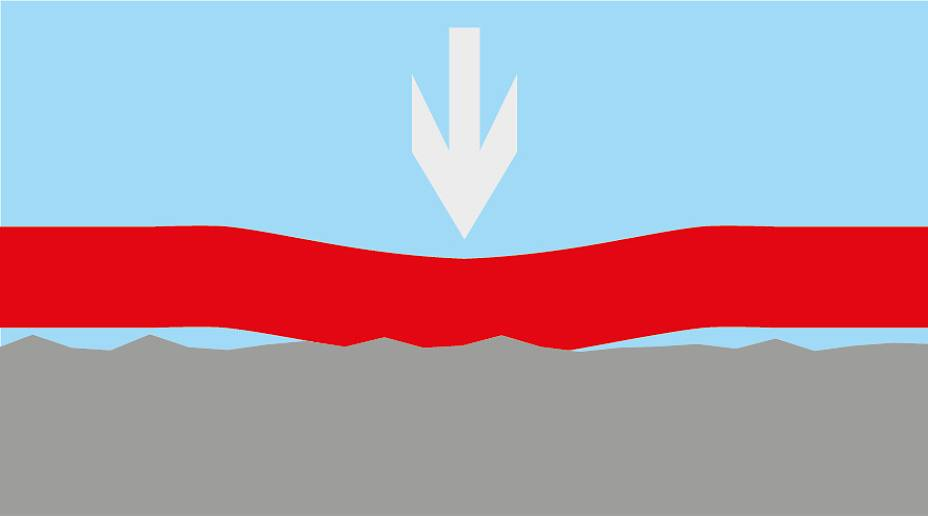
What are the classifications of pressure-sensitive adhesives
Pressure-sensitive adhesives can be divided into rubber-type adhesives and resin-type adhesives according to their adhesive types.
Rubber-type PSAs are composed of rubber as the adhesive and add tackifiers, fillers, antioxidants, etc. According to the type of rubber, it can be divided into natural rubber, polyisobutylene rubber, styrene-butadiene rubber PSA and so on.
The adhesive of resin type PSA is a synthetic resin, and there are homopolymer resins and copolymer resins. When preparing pressure-sensitive adhesives, tackifiers, softeners, fillers, and antioxidants need to be added. According to the type of resin, it can be divided into polyolefin, chlorine vinegar copolymer, acrylic resin, silicone, and fluoro resin PSA.
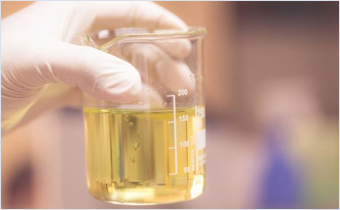
How to make a pressure-sensitive adhesive?
In addition to the adhesive, auxiliary substances such as tackifiers should be added to the PSA.
1. Base adhesive
PSA materials, such as rubber or synthetic resin, play its role in giving the adhesive layer sufficient cohesive strength and adhesive force, an amount of 30%-50%.
2. Tackifying agents
Tackifiers include rosin and its derivatives, petroleum resins, etc., whose function is to increase the adhesion of the adhesive layer. Its dosage is 20%-40%.
3. Plasticizer.
The plasticizer used is a plasticizer used in general plastic processing, and its function is to increase the viscosity of the adhesive layer. Its dosage is 0-10%.
4. Antioxidants.
Generally, rubber and plastic antioxidants are available, and their function is to improve the service life. The dosage is 0-2%.
5. Filler.
The filler used is a general plastic filler, which is to improve the cohesion strength of the adhesive layer and reduce the cost, and the dosage is 0-40%. In addition, for some PSAs, viscosity adjusters, vulcanizing agents, and solvents need to be added.
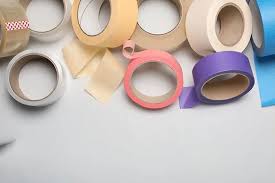
What are the common types of PSAs?
At present, the commonly used pressure-sensitive adhesives mainly include three types of rubber-type PSAs, acrylate-type PSAs and silicone PSAs.
1. Rubber-Based Solutions:
The rubber adhesive is the most widely used PSA, and the rubbers used include natural or synthetic rubbers and recycled rubbers.
- The compatibility, pressure sensitivity, and creep resistance of the PSA with natural rubber as the adhesive material are good, but the aging resistance is poor, and the hardness changes greatly.
- The heat resistance and durability of the PSA based on synthetic rubber are better than those of natural rubber, but the bonding strength is worse.
- Only reclaimed rubber of natural rubber can be used as the sticky material, and reclaimed rubber of synthetic rubber has a poor effect and should not be used.
For PSAs with natural rubber as the adhesive, natural rubber and synthetic rubber can be used together, partially vulcanized and cross-linked, and modified by grafting or by adding appropriate reinforcing fillers. These methods can improve the aging resistance of the adhesive layer and increase the service life of the rubber adhesives.
2. Acrylic Formulations:
Acrylate adhesive is currently the second most used PSA after rubber type, and its adhesive is a copolymer of acrylate and other vinyl monomers. Comonomers are divided into primary monomers, secondary monomers and functional monomers.
- The main monomers are butyl acrylate, etc., which are used to provide toughness and adhesion.
- Secondary monomers include methyl methacrylate, styrene, etc., which are hard monomers and can provide rigidity and cohesive strength.
- Functional monomers are monomers containing other functional groups, such as hydroxyethyl methacrylate, etc., which can play a cross-linking role during the polymerization process to further improve adhesion, cohesion, and thermal creep resistance.
This scientific monomer coordination enables the copolymer itself to have the basic properties of PSAs, so acrylate PSA is almost one component.
Compared with rubber-type PSAs, acrylic adhesives have excellent weather resistance and heat resistance without antioxidants, good oil resistance, a transparent adhesive layer, and no phase separation and migration. Since various polar groups can be introduced through copolymerization, the secondary valence force between molecules is increased, so it has relatively large adhesive strength and cohesive strength.
3. Silicone Systems:
Compared with rubber and acrylic PSAs, silicone adhesive is composed of silicone rubber and silicone resin. Silicone rubber is the basic component of pressure-sensitive adhesive, and silicone resin is used as a tackifier. The properties of silicone adhesives change with the ratio of the two. In the formula, the relative molecular mass of the raw silicone rubber is about 1.5×10, but the appropriate selection of the silicone resin requires an active end group at the end. Commonly used are methyl silicone resin, methyl phenyl silicone resin, and phenyl vinyl silicone resin. They all have good thermal stability, and the silicone pressure-sensitive adhesive has good bonding performance. It is bonded to the aluminum sheet with a strength of 21MPa. After 260 ° C and 7d, the strength remains unchanged. As the backing material of silicone pressure-sensitive adhesive, there are polyester, polyester, and so on.
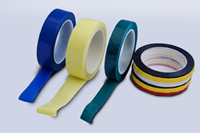
Product Formats:
Pressure-sensitive adhesive tape is generally made of ribbon-shaped rolls, with single-sided, double-sided, and adhesive sheets in three forms.
1. Single-sided coated adhesive.
It is in front of the substrate coated with primer and then coated with pressure-sensitive adhesive; the reverse side of the brush back treatment agent can be rolled.
2. Double-coated adhesive
Double-sided adhesive tape with single-sided adhesive film does not require a back-side treatment agent, but a layer of isolation paper on one adhesive surface. The base material of the adhesive tape is the basic material to support the PSA. As the substrate of pressure-sensitive adhesive, it must have good mechanical strength, uniform thickness, not be easily deformed, and have better wetting with PSA and other characteristics. Commonly used substrates are cotton, glass cloth, synthetic fibers, and other fabrics, polyethylene, polyester, polyvinyl chloride and other plastic films.
3. Primer
The primer is applied between the PSA and the substrate to enhance the adhesion of the PSA to the substrate and prevent debonding.
There are two types of primers: hybrid and graft.
- The hybrid primer is a mixture of a resin with affinity for the substrate and a resin with affinity for the PSA.
- Graft copolymer primers are made by graft copolymerization of monomers of resins that have affinity for the base material with the resin that has affinity for the PSA as the main chain.
Some PSAs have strong adhesion to the substrate and can be applied without a primer.
The so-called backing agent is in the single-sided adhesive tape substrate coated on the back of a layer of adhesive tape rolled into a circle to play a role in the interlayer isolation of substances. This treatment agent can also improve the physical-mechanical properties of the substrate. Selecting the back of the treatment agent requires a good interlayer isolation ability, peeling the tape when the back can not be with the next layer of PSA, but also requires good transparency and non-migration. Commonly used backing agents are polyacrylate, polyvinyl chloride, cellulose derivatives, and silicone compounds. The substrate or PSA is different, and the choice of treatment agent is also different, but it can also be used in conjunction with several treatment agents. Double-sided adhesive tape, labels, adhesive paper, adhesive sheets, etc., should be covered with a layer of isolation paper on its PSA surface. Commonly used isolation papers are semi-rigid polyvinyl chloride film, polypropylene film, silicone-coated release line, and Kraft paper coated with a backing agent.
What are the adhesion characteristics of PSA?
Pressure sensitivity is the performance of PSA adhesion characteristics, its adhesion characteristics are composed of four elements of fast adhesion force (A), adhesion force (B), cohesion force (C), and sticky base force (D).
1. Fast adhesive force (A) refers to when the adhesive tape and the sticky material are pressed with light pressure, the fastest speed of contact immediately after the separation of the interface peeling force. It can be understood as the initial adhesion, performance stickiness, and psa to the sticky material wetting ability, etc.; it is difficult to lay down a strict definition.
2. Adhesion force (B) is the peeling force between the adhesive tape and the surface of the object to be adhered after proper pasting, the size of which determines the adhesion performance of the adhesive tape.
3. Cohesion (C) is the cohesive strength of the adhesive layer, which is related to the intermolecular force, intermolecular bond, molecular size, and intermolecular arrangement.
4. Adhesive base force (D) is the adhesion force between psa and substrate or between psa and primer and primer and substrate.
Because these four forces should meet the relationship between A < B < C < D, in the design of psa formulations should pay strict attention to the nature of each component and the amount and its impact on the adhesion characteristics.

6. How to choose the preparation process of PSA tape?
The preparation process of pressure-sensitive adhesive tapes involves different processes and equipment due to different substrates, types of glue, types of film,s and shapes of tapes.
1. Formulate
The PSA suitable for solvent coating is first to dissolve the adhesive in the solvent, then add other components, stir well, and prepare a glue with a certain viscosity for later use. If the adhesive is rubber, it is best to masticate first to increase the fast tack and solubility and appropriately reduce the cohesion. Suitable for PSAs coated by the roll-on method. Generally, the rubber, anti-aging agent, resin (tackifier), plasticizer, viscosity modifier and filler are mixed uniformly on a rubber mixer first, and then a small amount of the solvent can be diluted to a certain viscosity.
2. Coating
After the PSA, primer, and backside treatment agent are prepared, they can be coated on the substrate by solvent method or the roll-on method, and then the solvent is removed. The thickness of the adhesive layer is preferably 0.02-0.03mm.
When the solvent method is used for coating, the primer and the backside treatment agent are first applied to two different surfaces of the substrate during the advancement of the substrate, and then the pressure-sensitive adhesive is applied after drying. The whole process is carried out continuously. The solvent method has simple equipment, convenient operation, and a wide range of coating thicknesses, which is especially suitable for coating glue on low-strength substrates. The disadvantage is that it needs to consume a large amount of solvent, which increases the cost and pollutes the environment.
The sizing sequence of the roll-on method is basically the same as that of the solvent method, except that the glue is distributed on the rollers, and the substrate to be coated is passed between the two rollers (one or both of which are coated with glue) to complete the gluing. The thickness can be adjusted by the distance between the twin rolls. Using the roller coating method does not use or less solvent, the cost is low, the pollution is small, the thickness of the adhesive layer is uniform, and the construction is safe and convenient, but the equipment is more complicated, and it is only suitable to apply glue on the substrate with higher strength. Improved roll-on methods, such as isolation roll-on, have wider applicability and can be used to apply glue to any substrate.
What are the applications of PSA in electronic appliances?
Pressure-sensitive adhesives are widely used in electronic and electrical appliances, mainly in the following areas.
1. Electrical insulation
Electrical insulation is mainly transformers, electromagnetic coil winding interlayer insulation and external sealing, wire and cable joints, and end insulation. The most commonly used is PVC tape and polyester tape. A heat-resistant silicone pressure-sensitive adhesive can be used on glass cloth, polytetrafluoroethylene, or polyimide as the base material of the tape. Small transformers and low-voltage coils with polyvinyl chloride, polyester, polypropylene, or impregnated, coated paper and cloth, and other substrates of PSA tape as winding insulation, end fixing, and external sealing. For large transformers, requiring heat resistance should be used aromatic polyamide and glass cloth tape, but also polyimide, polytetrafluoroethylene, or silicone-impregnated glass cloth tape. In order to improve the electrical insulation performance of the transformer, generally, vacuum impregnation treatment of insulating varnish is used, and when the electrical tape is used to resist the impregnation of insulating varnish.
![]()
2. Welding, masking, and surface protection
Printed wiring boards are to be a plating process to improve contact performance, the board in the wave soldering, the needs to mask the parts not on the tin; in the spray to use, masking tape. Masking tape generally uses high-strength thin paper, crepe paper, or polyester film as a substrate. It also requires solvent resistance, and wave soldering masking tape requires instant resistance to high temperature above 230°C. Household appliances with advanced nameplates and spray surfaces, the surface of the glass screen of the picture tube, as well as the surface of electronic calculators are mostly use polyethylene film as the base material of the protective film (a special PSA tape) for surface protection. The requirements are easy to peel, and PSA should not remain and contaminate the protective surface. Semiconductor and integrated circuit silicon wafers also need to use a protective film.
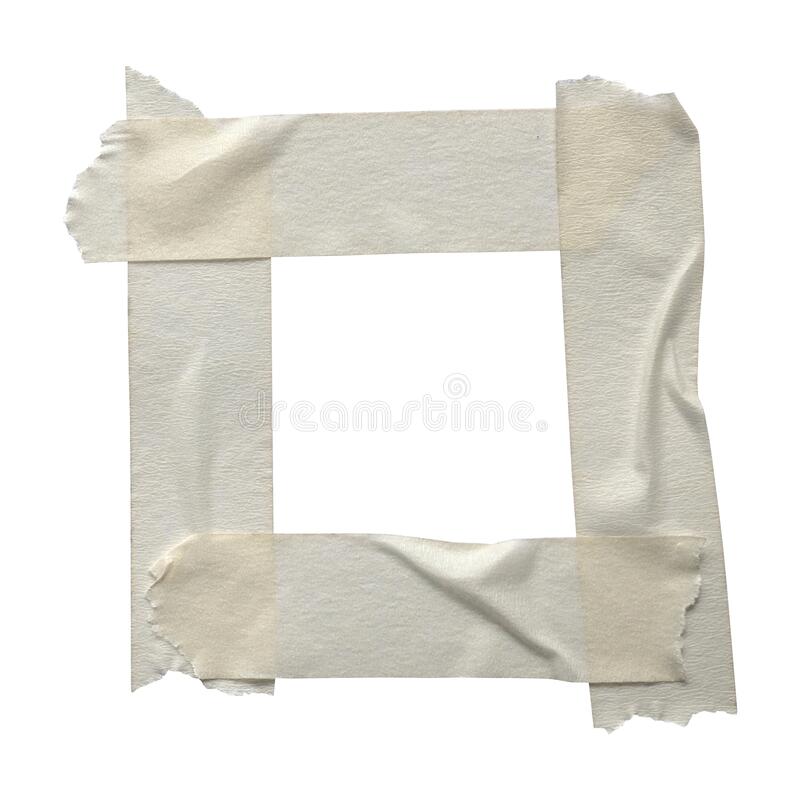
3. Cluster fixed
TV deflection coils, demagnetization coils and other electromagnetic coils of the cluster and end of the processing of most of the use of flame-retardant polyvinyl chloride tape. Refrigerators, washing machines and other electrical conduits or plywood fixing and sealing; refrigerators, air conditioners in the production process, foamed polyurethane or foamed polyethylene and other insulation materials when forming the fixing and sealing, the buffer between the glass case of the picture tube and the explosion-proof hoop are applied to a variety of PSA tape. Printed circuit board assembly plug-in automation requires neatly arranged components, the use of paper-based PSA tape can make individual components into an orderly packaging form of tape, the whole plant and then in the order of the various components based on the pre-programmed instruction program for the second selection sequence of tape, which is currently the only electronic industry can be carried out at high speed automatic plug-in method. In addition, the automated production of porcelain chip capacitors, polyester capacitors and resistors also require pressure-sensitive tape for taping. Electronic equipment tends to be ultra-miniaturized, the production of sheet (no lead) components will increase, will make no lead components packaging pressure-sensitive adhesive tape and can be hot melt PSA dosage will be greatly increased.
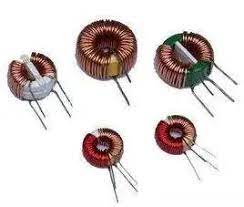
4. Double-sided paste
The installation of the scale board of audio equipment and the indication sign on the door of the color TV can be greatly improved by using double-sided adhesive tape. Foam polyurethane-based double-sided tape is also widely used in audio-visual equipment for shockproofing. Double-sided tapes are also used for the end reinforcement of flexible circuit boards required for the miniaturization of electronic computers and other equipment, for the installation of diaphragm switches used on electronic calculator keyboards, and for the installation and fixing of polarizing poles for liquid crystal displays.


